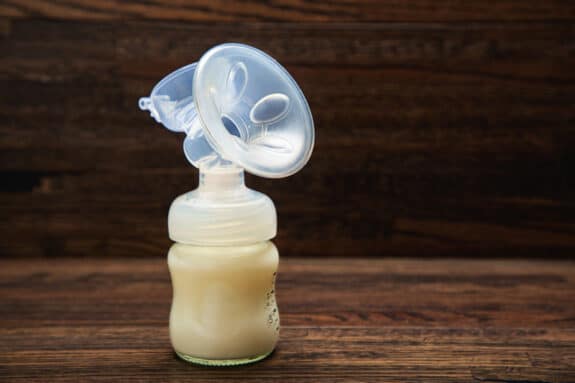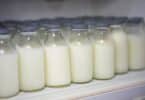Breast milk is almost always the best source of nutrition for infants under twelve months of age. This has been verified by many organizations, including the World Health Organization. But when the mother is HIV positive, there is an increased risk of HIV transmission from mother to baby when the mother breastfeeds. In the United States and other developed countries, formula is a perfectly acceptable alternative.
In developing countries, however, feeding an infant formula can result in premature death because of viral infections or malnutrition. This is sort of a two-fold problem – early cessation of breastfeeding increases the chances of morbidity and mortality but longer breastfeeding increases the chances of contracting the HIV virus for infants. In these instances, finding a way to reduce the transmission from mother to baby is necessary for infant survival.
One thing that researchers do know is that babies who are fed breast milk exclusively by their HIV infected mothers are less likely to contract the virus than babies that are fed both breast milk and formula. Physicians believe this may have something to do with the microbes in the gut of breastfed infants; infants who are breastfed have a more diverse gut microbe composition than formula fed infants. Additionally, formula can introduce allergens and contaminants from local water sources, forcing the infant’s body to fight the allergens and contaminants, rather than the HIV virus.
Special medications are offered in some areas to nursing mothers. These medications help to neutralize the HIV virus in their breast milk, reducing the chances of mother-to-child HIV transmission. A group of researchers are working on developing and refining nipple shields that may also help to reduce mother-to-child transmission. Physicians can help educate mothers on proper and safe feeding techniques and administer medications or other resources to nursing mothers with HIV.
But these resources aren’t available everywhere they are needed, and in these areas, the mothers are left with very few options – feed formula and risk losing their baby to malnutrition or a viral infection or breastfeed them and risk transmitting the virus to their baby. I can only imagine how heartbreaking it must be to try and choose between these two very awful choices.
To help reduce the mortality rate and mother-to-baby transmission rate in these areas where resources are very limited, researchers have been trying to come up with a viable solution – one that almost any woman can implement, no matter how limited her resources are. And they believe they may have found an effective solution – flash heating.
“Flash heating can help women provide nutrient and antibody-rich breast milk to their infants beyond six months of age and reduce the possibility of HIV transmission at the same time,” said Caroline Chantry, professor of pediatrics at UC Davis Children’s Hospital.
In flash heating, the breast milk is expressed directly into a glass container. It is then placed in water until it boils. Proper hand washing techniques and clean utensils are key in this method, as is allowing the breast milk to reach the right temperature. Mothers must also allow the milk to cool enough that it can be fed to the child with a spoon or cup.
The technique is not new, as it is recommended by the World Health Organization, but it has only recently been researched to determine its practicality in real-world circumstances. For the last year, researchers from UC Davis and UC Berkeley have followed HIV positive mothers in the resource-poor urban area of Dar es Salaam, Tanzania. Most mothers needed very little guidance in learning the technique, which means that the technique can be taught, even without the aid of a physician. Moreover, women were willing to implement the technique and did so over an average of about ten weeks. Some mothers were even able to utilize the technique for up to a full year.
“More women with HIV than we anticipated were willing and able to flash heat their breast milk and make it safe, despite very limited resources,” said Chantry, adding that “these mothers succeeded in flash heating with only modest support from trained peer counselors, rather than professional health-care providers. This method is inexpensive in the terms of costs and workforce and could be sustainable in resource-limited settings.”
Now, the researchers hope to start a study on whether or not the method can improve the overall health of the infant. They plan to evaluate the cost-effectiveness of health improvements and track the number of averted HIV transmissions from mother to infant.
“Our focus in on improving both HIV-free ‘thrival’ as well as HIV-free survival,” Chantry said. “WHO has also called for research of the supporting and sustaining this practice on a large scale.”
Related Articles:
- Denying Breastfed Babies of Pacifiers May lead to More Formula Consumption
- Study: Store Bought Baby Food Severely Lacking in Nutritional Value
- Hospitals Being Pressured to Stop All Formula Samples to New Parents







